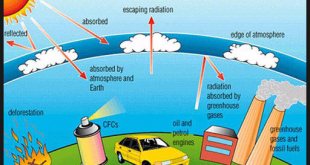What is water pollution?
The contamination of water with unwanted and harmful substances is called water pollution. The sources of water pollution are industrial wastes, synthetic detergents, agricultural run-offs, oil leakage etc. Water pollution affects the aquatic life, makes the water non potable for drinking and causes a phenomenon known as eutrophication. In eutrophication, nutrients of water are increased due to the dumping of detergents, pesticides etc as a result, the dissolved oxygen is reduced in the water body, as a result the phytoplanktons die, these dead algae are consumed by the bacteria which leads to further depletion of oxygen level, affecting the aquatic life.
- BHOPAL GAS TRAGEDY
This incidence is related to the air pollution. In the year 1984, poisonous methyl isocyanate leaked from the Union Carbide Plant situated in Bhopal killing thousands of people living near the plant and affecting more than three lakh others. The fumes of the leaked gas were so poisonous that even after the passage of 3 decades people suffered from various ailments. Moreover, the stored poisonous material seeped through the soil and contaminated the groundwater affecting people’s health further.
The commonly known adverse health problems caused due to leakage of methyl isocyanate include respiratory disorders, partial or complete blindness, impaired immune system and poor functioning of the reproductive system leading to spontaneous abortion, stillbirths and offspring with genetic disorders.
- YAMUNA ACTION PLAN
This plan is related to the water pollution. The Yamuna is the main tributary of river Ganga with a total length of 1370 km. it starts from Yamunotri in Uttarakhand and flows through the states of Delhi, Haryana and Uttar Pradesh before merging into the Gange at Allahabad.
The Yamuna is one of the most polluted rivers in the world, specially around New Delhi which dumps about 60% of its waste into the river. Though numerous attempts have been made to clean it, the efforts have proven to be futile.
The Yamuna is getting polluted due to the disposal of effluent, garbage, sewage, animal dead bodies etc. These pollutants make its water toxic. In addition, the Yamuna River remains stagnant for almost nine months of the year aggravating the situation. The polluted water under the ground and polluted the underground water as well. Several orders have been passed by the court that untreated effluent should not be allowed to go into the river. A lot of money has been spent in Yamuna River Plan. Sewage plants have been repaired and rebuilt, but pollution of the river water has not come under control. The concerned authorities need to identify the problems and take timely action to achieve the targets.
Q.1. Eutrophication is related to:
- Water pollution
- Noise pollution
- Soil pollution
- Radioactive pollution
Ans. a
Q.2 In eutrophication, dissolved oxygen:
- Increases
- Decreases
- Both a and b
- None
Ans. b
Q.3. Yamuna Action Plan is related to:
- Water pollution
- Noise pollution
- Soil pollution
- Radioactive pollution
Ans. a
Q.4. Bhopal Gas Tragedy is related to:
- Water pollution
- Noise pollution
- Soil pollution
- Air pollution
Ans. d
Q.5. Which chemical is associated with Bhopal Gas Tragedy:
- IAA
- Ethylene
- Methyl isocyanate
- Nitric acid
Ans. c
 IT2EDU Empowering Education Through Technology
IT2EDU Empowering Education Through Technology

